- News
- Reviews
- Bikes
- Components
- Bar tape & grips
- Bottom brackets
- Brake & gear cables
- Brake & STI levers
- Brake pads & spares
- Brakes
- Cassettes & freewheels
- Chains
- Chainsets & chainrings
- Derailleurs - front
- Derailleurs - rear
- Forks
- Gear levers & shifters
- Groupsets
- Handlebars & extensions
- Headsets
- Hubs
- Inner tubes
- Pedals
- Quick releases & skewers
- Saddles
- Seatposts
- Stems
- Wheels
- Tyres
- Tubeless valves
- Accessories
- Accessories - misc
- Computer mounts
- Bags
- Bar ends
- Bike bags & cases
- Bottle cages
- Bottles
- Cameras
- Car racks
- Child seats
- Computers
- Glasses
- GPS units
- Helmets
- Lights - front
- Lights - rear
- Lights - sets
- Locks
- Mirrors
- Mudguards
- Racks
- Pumps & CO2 inflators
- Puncture kits
- Reflectives
- Smart watches
- Stands and racks
- Trailers
- Clothing
- Health, fitness and nutrition
- Tools and workshop
- Miscellaneous
- Buyers Guides
- Features
- Forum
- Recommends
- Podcast
feature
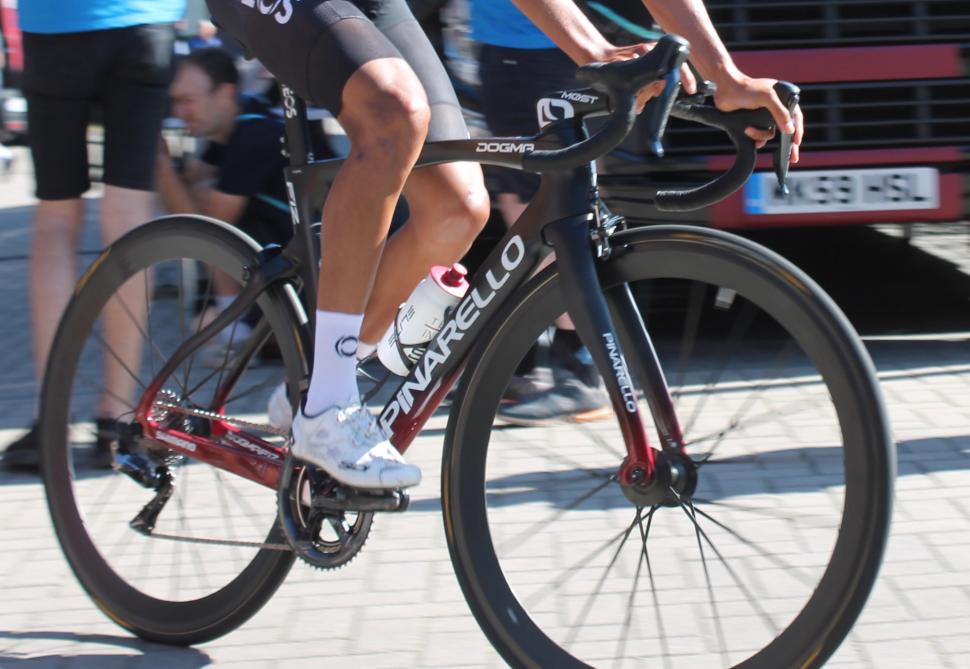 Tour de France 2019 Ineos Bernal Pinarello Dogma F12 - 1
Tour de France 2019 Ineos Bernal Pinarello Dogma F12 - 1Top tech trends at the Tour de France: how pro bikes are evolving
The bikes that the pros ride are constantly evolving as a result of the latest technological innovations and team preferences, and here are the biggest trends that we've noticed this year.
None of these features is entirely new – indeed, some have been around for ages. What is new is the degree to which they're now being incorporated into the bikes of the peloton.
Integrated handlebars/stems
Integrated handlebars/stems have been around for years but we've seen more of them than ever before in 2019.
The new Pinarello Dogma F12 ridden by Team Ineos has a MOST Talon integrated handlebar that has been refined and features a channel for the cables. The rear of the stem section is enlarged to allow the cables to go directly into the frame.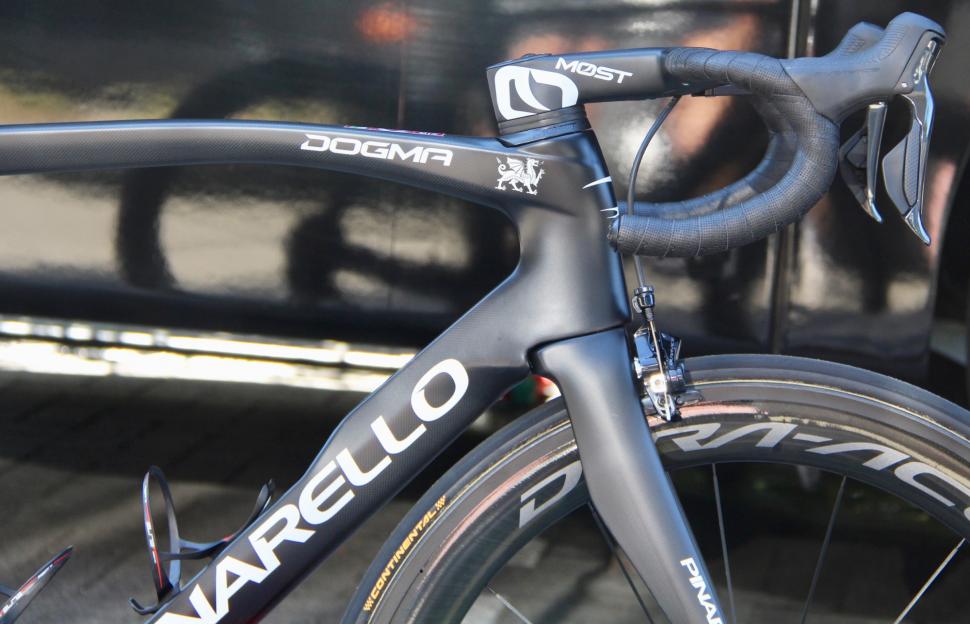
Find out more about Geraint Thomas's Pinarello Dogma F12 here.
The new Scott Addict RC, as ridden by Simon Yates of Mitchelton—Scott, features a combined handlebar and stem called the Syncros Creston iC SL combined version here (it's available to buy with a separate handlebar and stem, if that's what you're after).
The brake hoses and Shimano Di2 wires feed into the handlebar/stem and are taken internally into the front of the enlarged head tube. Scott calls its new head tube and steerer tube the “Eccentric Bicycle Fork Shaft”. The design will also take mechanical gear cables, although Mitchelton–Scott uses electronic shifting only.
Check out Simon Yates' Scott Addict RC here.
Wanty–Groupe Gobert riders have the option of riding Cube's new Litening C:68X, another new bike with an integrated bar/stem.
Find out all about the Cube Litening C:68X here.
Loads of riders from various teams use the Vision Metron 5D integrated bar/ stem which has been around for a few years now. This is Andre Greipel making sure that his bike is set up correctly, for example.
Some riders use the 6D version which has tops that are straight rather than arcing forwards.
Over on Katusha–Alpecin and Movistar, the Canyon H36 combined bar and stem is still popular.
No wires or brake hoses to be seen!
Related to the increased number of integrated handebar/stems, the trend towards hiding every little bit of gear wiring and brake cable/hose continues .
Internal cable routing has been a feature of high-end bikes – and many cheaper bikes – for ages but its getting rarer to see even a glimpse of cable or hose.
Total Direct Energie riders are using the new Wilier Zero SLR that the Italian brand describes as "the first superlight road racing bike with disc brakes and fully integrated cables".
One of the Zero SLR's key features is its integrated carbon handlebar/stem (see above) which takes the brake hoses and shift cables internally. These run down into the frame via two-part composite spacers that lock together in use.
As mentioned above, the new Scott Addict RC, Pinarello Dogma F12 and Cube Litening C:68X have similar systems where the wires and cables or hoses run internally through the stem section and directly into the frame without seeing daylight in between.
The Cervelo S5 Disc is another new bike – launched last autumn – with cable routing that's now fully internal. This one belongs to Michael Matthews of Team Sunweb.
The bar and stem look like they're integrated at first glance but they're really two separate components.
There are certainly bikes out there where some of the cabling remains external (see the pic of Canyon's H36 handlebar/stem higher up the page, for example), but it's becoming the exception rather than the rule, especially on aero road bikes.
Disc brakes
Wind yer neck in, of course we have to mention disc brakes! Like them or loathe them, there are more in this year's Tour de France than ever before.
Some teams still don't touch disc brakes. Movistar, for example, has none on any of its Canyon bikes.
Other teams, such as Bora-Hansgrohe (this is Peter Sagan's Specialized S-Works Venge, above) and Deceuninck–QuickStep, use disc brakes exclusively.
Some teams have a mixture of the two. Jakob Fuglsang of Astana (who has now abandoned the race), has an Argon 18 Nitrogen Disc...
...and a Gallium Pro with rim brakes.
There's an increasing number of disc brake-only high-end bikes out there like the new Scott Addict RC, the Wilier Zero SLR and the Cube Litening C:68X. With that in mind, we can only see this shift from rim brakes to disc brakes continuing in the pro peloton.
Short saddles
We've seen more short saddles in the peloton this year than previously.
We intercepted these Prologo Dimensions en route for Astana and Groupama–FDJ...
...and spotted this one on an EF Education First bike. It's just 245mm long and designed for those who spend a lot of time in the drops.
Read our review of the Prologo Dimension Nack saddle.
The Cadex Boost on the bike belonging to CCC's Patrick Bevin is just 1mm longer.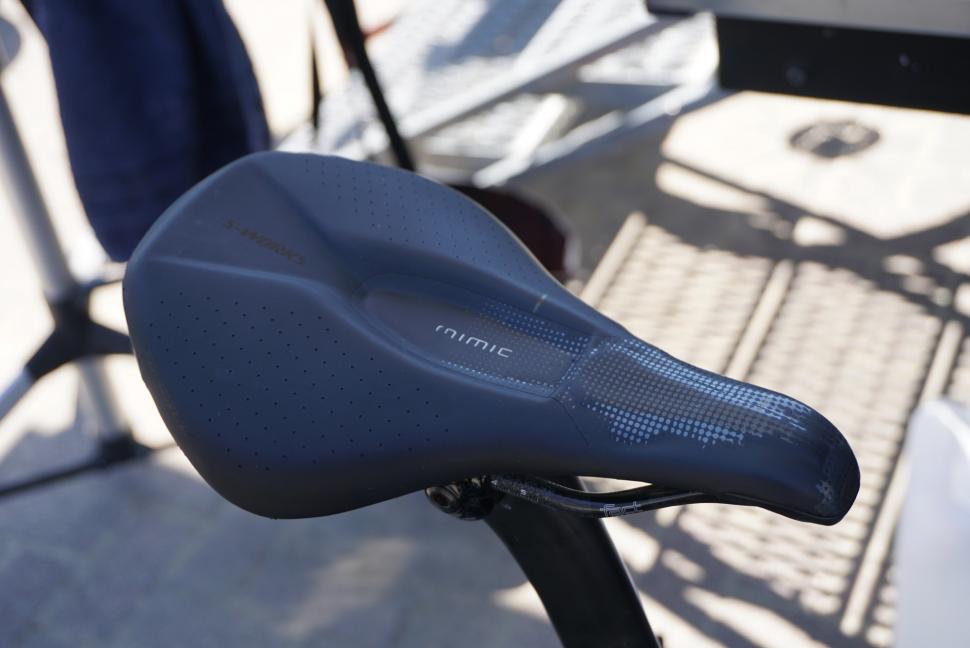
Some of the Bora–Hansgrohe team choose Specialized's Women's S-Works Power with Mimic over any of the men's saddles in the range, and it's another shorty.
Check out 6 of the best shorty saddles.
Tubeless tyres
Let's not overstate this one; the vast majority of tyres used in the pro peloton are tubulars, but there has been a small move towards tubeless.
Campagnolo's Bora WTO (Wind Tunnel Optimized) aero wheels aren't available for tubular tyres, they're tubeless-ready only. This is Alejandro Valverde's Canyon Ultimate CF SLX fitted with Bora WTO 40s and Continental Grand Prix 5000 TL (tubeless) tyres.
Read our Continental Grand Prix 5000 TL review here.
Deceuninck–Quick-Step riders have used Specialized's new S-Works Turbo RapidAir tubeless tyre.
Specialized says, "They have all of the tubular ride characteristics our pros love, rolling faster and handling corners better, but with instantly sealed flats and quick installation."
There's no danger of tubeless tyres overtaking tubulars in terms of popularity in the peloton any time soon, but they're certainly a technology that's on the up.
Aero tweaks for non-aero bikes
Over recent years we've become used to brands offering pro riders a choice of road bikes: a lightweight one and an aero one, and sometimes an endurance one too (usually for the cobbled classics). We're now seeing brands incorporating more aero features on their lightweight bikes.
The Wilier Zero SLR ridden by Total Direct Energie, for example, is certainly lightweight, especially for a disc brake bike, with a frame weight of 780g and a fork weight of 340g. It's not an aero road bike by any means but Wilier has increased the distance between the fork blades and the wheel to improve aerodynamics, something it says that it learned when developing its Turbine triathlon and time trial bikes.
The carbon monocoque seatpost has a D-shaped cross section; a rounded leading edge while the rear is squared off. Wilier says that although it's not designed to be ultra-aero, it's more aerodynamically efficient than a round post.
The Foil is the aero road bike in Scott's range but the brand has brought more aero features into the new Addict RC, as used by Mitchelton–Scott. We've already mentioned the new one-piece handlebar and stem with internally routed brake hoses and gear wires, and Scott’s own patented airfoil tube shape has been used for the down tube, head tube, seat tube, seatpost, seatstays. Those seatstays have also been lowered (they meet the seat tube lower) to reduce the size of the gap behind the seat tube and decrease drag.
The result is a bike that saves the equivalent of six watts at 45km/h compared to the previous Addict, according to Scott.
Team Ineos doesn't do the aero bike/ lightweight bike thing, using the Pinarello Dogma F12 for all road stages. The Dogma didn't start out as an aero road bike but it gets more aero with every update, Pinarello claiming that the F12 has 7.3% less drag than the F10, saving the equivalent of eight watts at 40km/h.
We've talked about the updated Talon combined bar/stem already. The Flat Back down tube profile is retained from the F10, but has been made narrower. The idea is that the tube shape works to improve airflow with a water bottle in place.
Pinarello has also reshaped the bottom bracket to allow the bottle cage to be mounted 5mm lower.
The fork has been updated with a large profile at the top of the legs to help to improve airflow there while Pinarello has also looked closely at the junction of the head tube, down tube and fork crown meet to reduce drag in that area.
Mat has been in cycling media since 1996, on titles including BikeRadar, Total Bike, Total Mountain Bike, What Mountain Bike and Mountain Biking UK, and he has been editor of 220 Triathlon and Cycling Plus. Mat has been road.cc technical editor for over a decade, testing bikes, fettling the latest kit, and trying out the most up-to-the-minute clothing. He has won his category in Ironman UK 70.3 and finished on the podium in both marathons he has run. Mat is a Cambridge graduate who did a post-grad in magazine journalism, and he is a winner of the Cycling Media Award for Specialist Online Writer. Now over 50, he's riding road and gravel bikes most days for fun and fitness rather than training for competitions.
Latest Comments
- whosatthewheel 1 hour 37 min ago
Except, the earth isn't flat. It's a cube.
- David9694 3 hours 20 min ago
Black ice or avoiding a cyclist
- Spangly Shiny 3 hours 30 min ago
Ahem, that would actually be two through lanes for the city traffic and two lanes that filter right onto Owlerton Green. This is a major junction...
- chrisonabike 3 hours 46 min ago
Now I'm very afraid. If they're falling back on "but all drivers are trained and we have road laws" as a safety measure all bets are off. As far...
- don simon fbpe 3 hours 55 min ago
They'll go batshit when they find out what TNT Sports have done in U.K.
- Rendel Harris 4 hours 3 min ago
Sorry, I think you can only see this on Facebook, but absolutely brilliant: guy in a Range Rover has his vehicle seized for no insurance, his wife...
- Spangly Shiny 4 hours 40 min ago
So which is the free one then? All the ones I can see in this list will cost.
- don simon fbpe 4 hours 48 min ago
Nice though that Ribble is, it's not a pro-team bike, is it? Got to love a bit of 90s Campagnolo, shame it's only a 50t, but I guess those Chiltern...
- chrisonabike 6 hours 15 min ago
Agree, but again it's how to start to break the vicious circle?...
- chrisonabike 6 hours 26 min ago
I'm either amazed that they can get through with (presumably) a full sized waste truck, or amazed that she could not. Although as you say the bin...

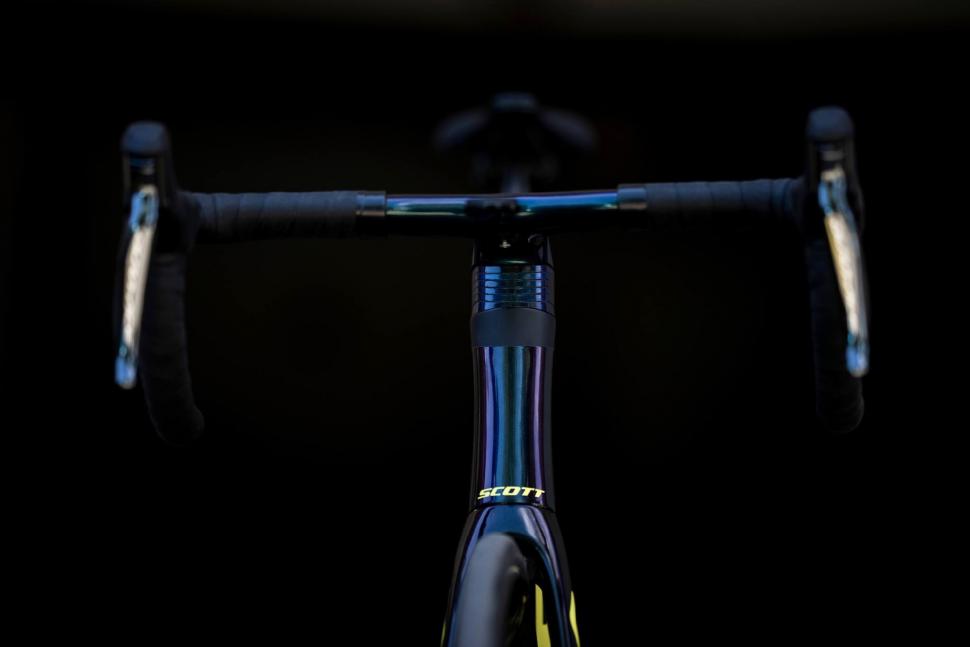
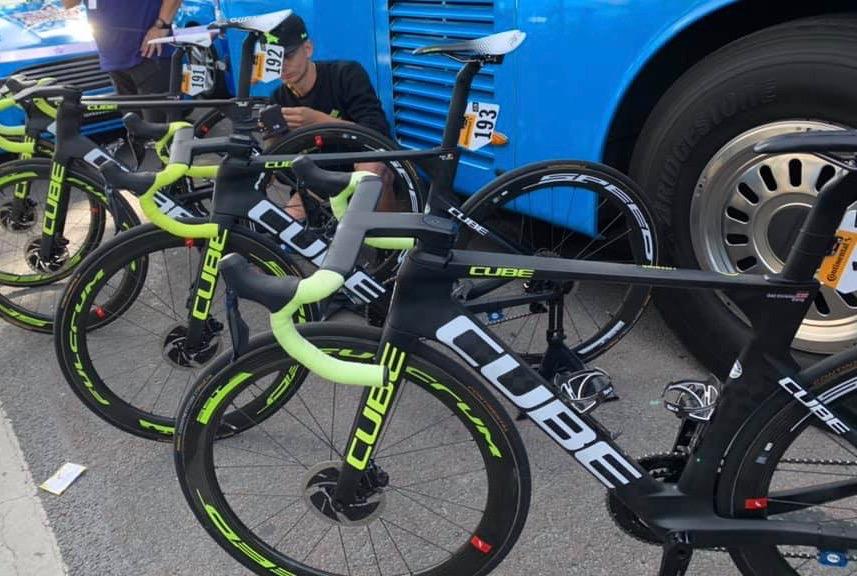
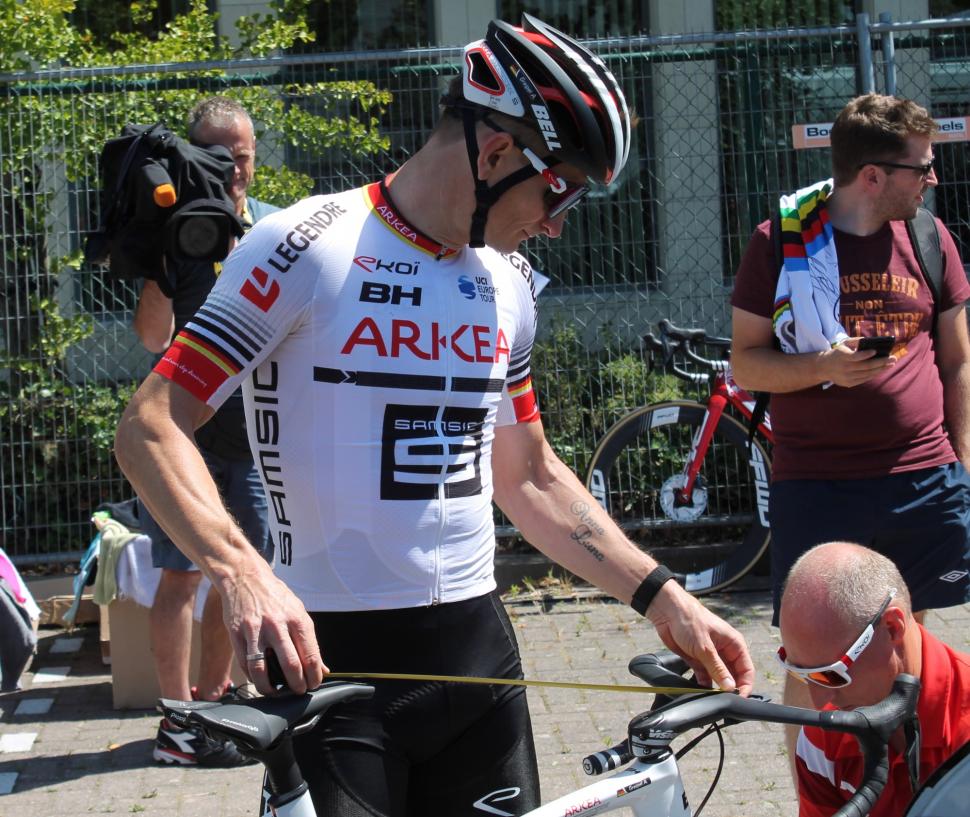
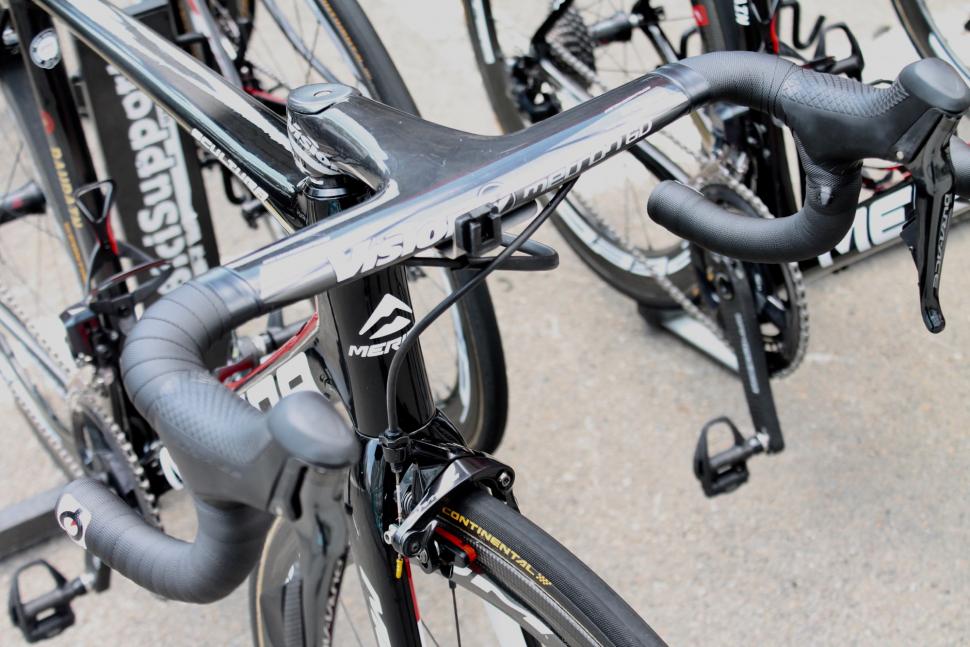
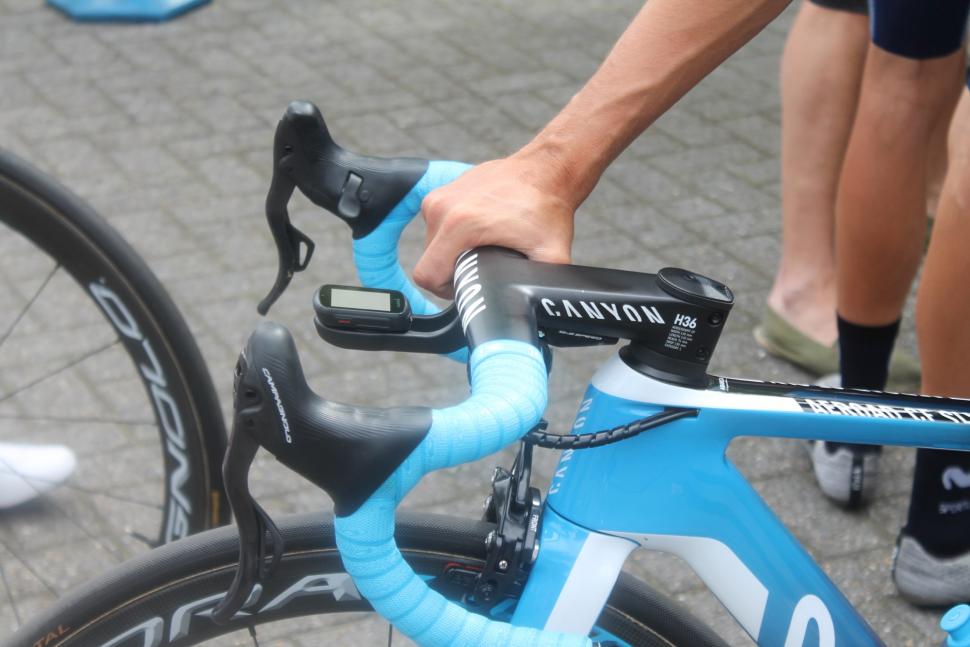
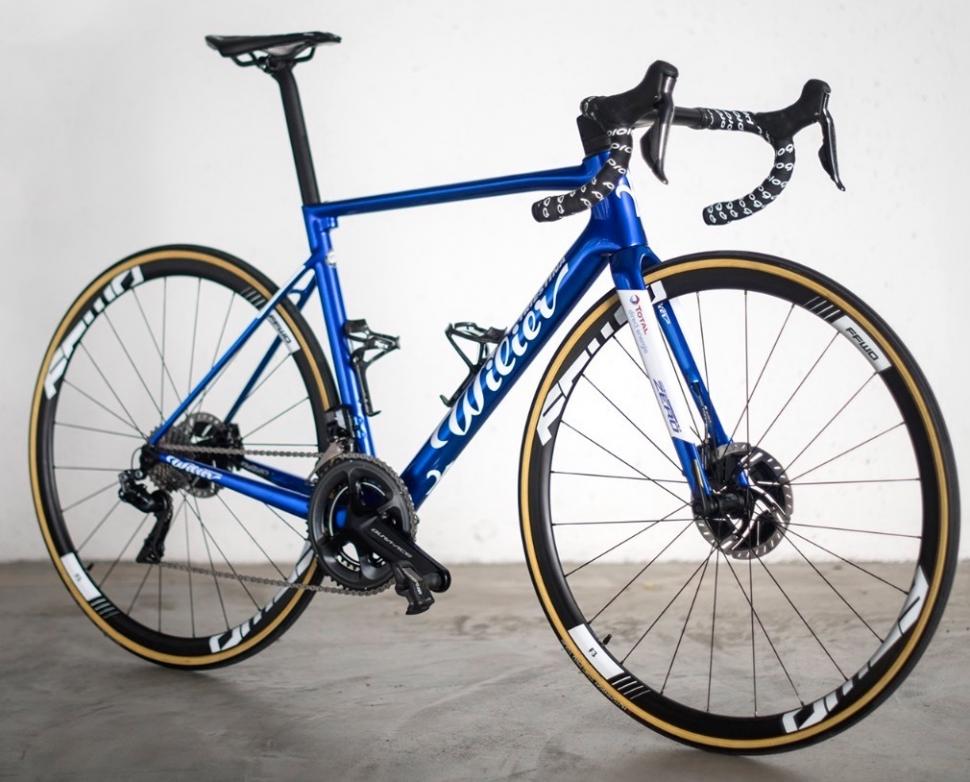
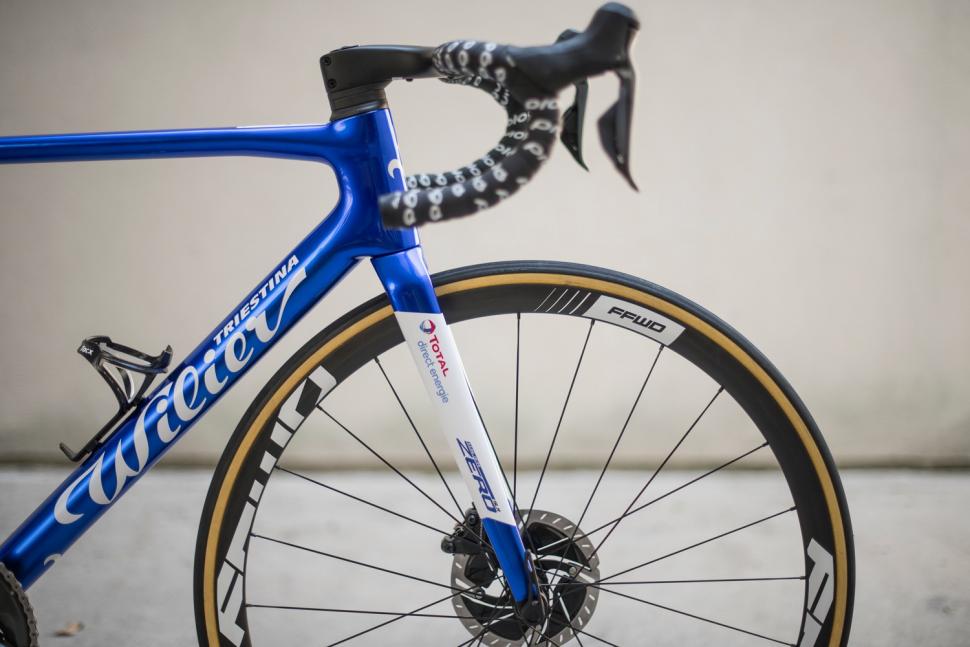
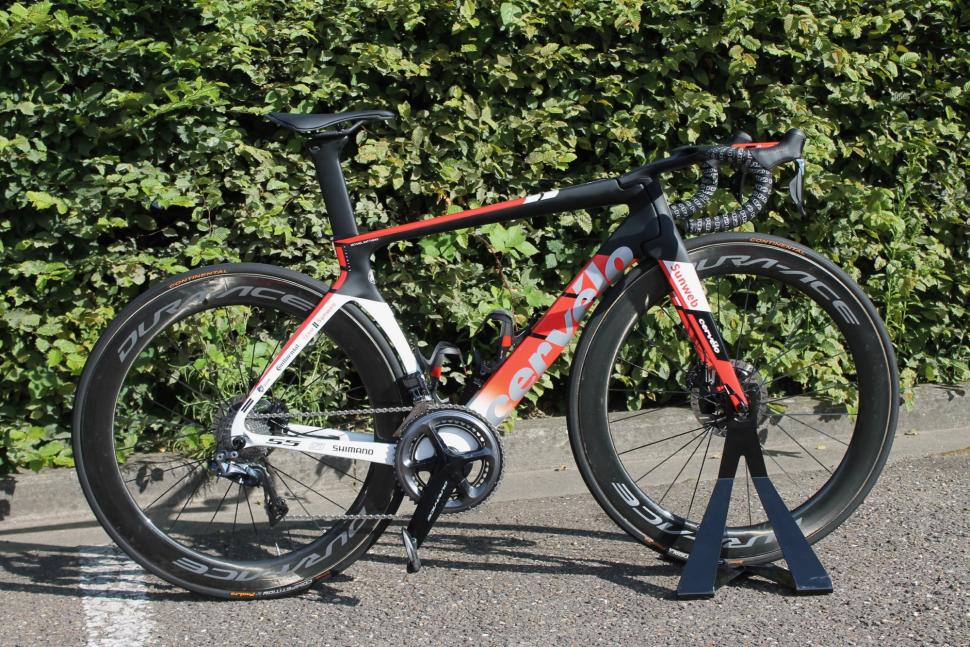

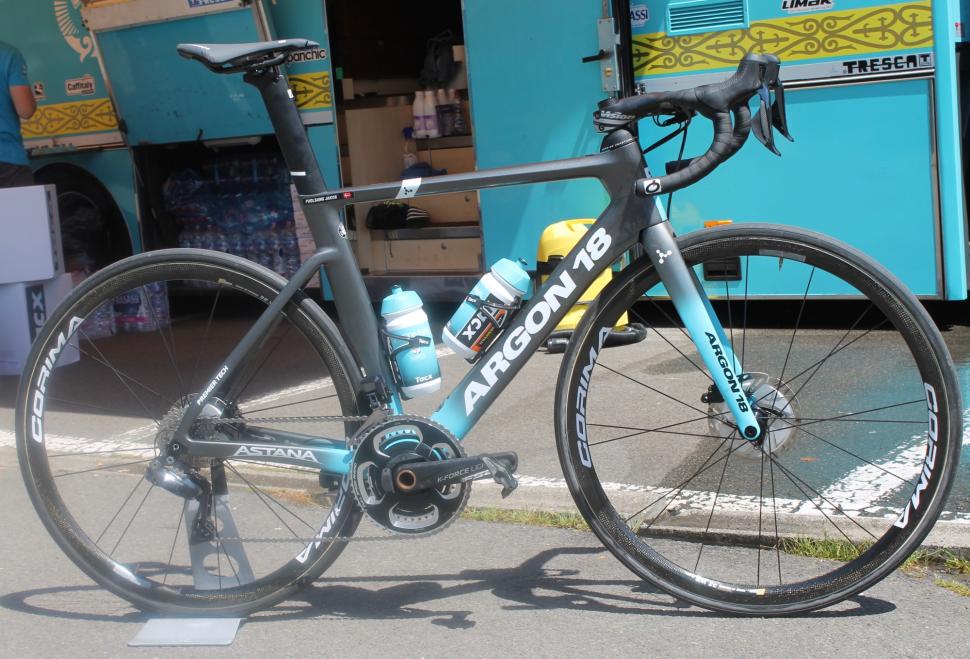
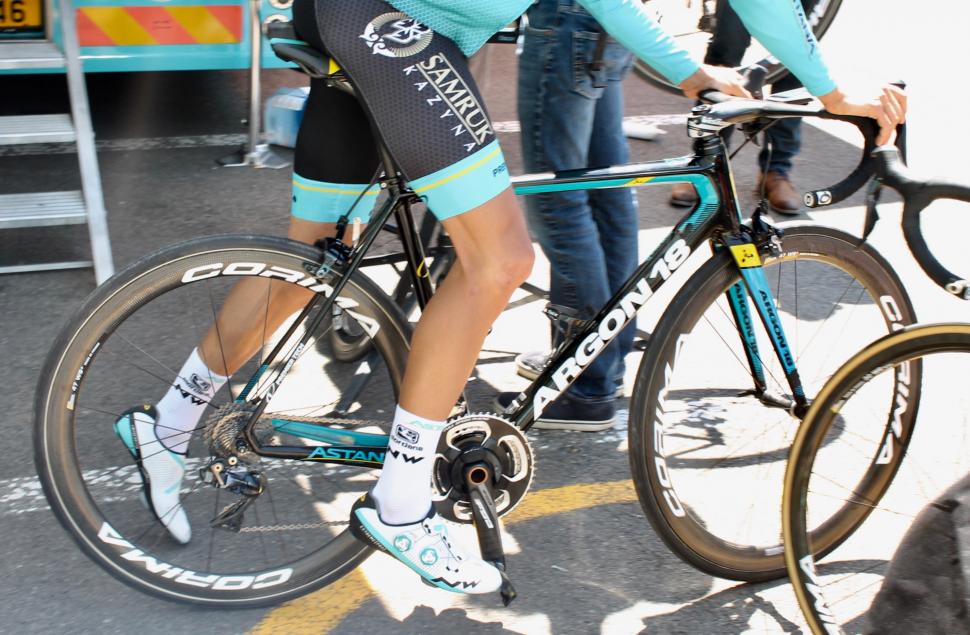
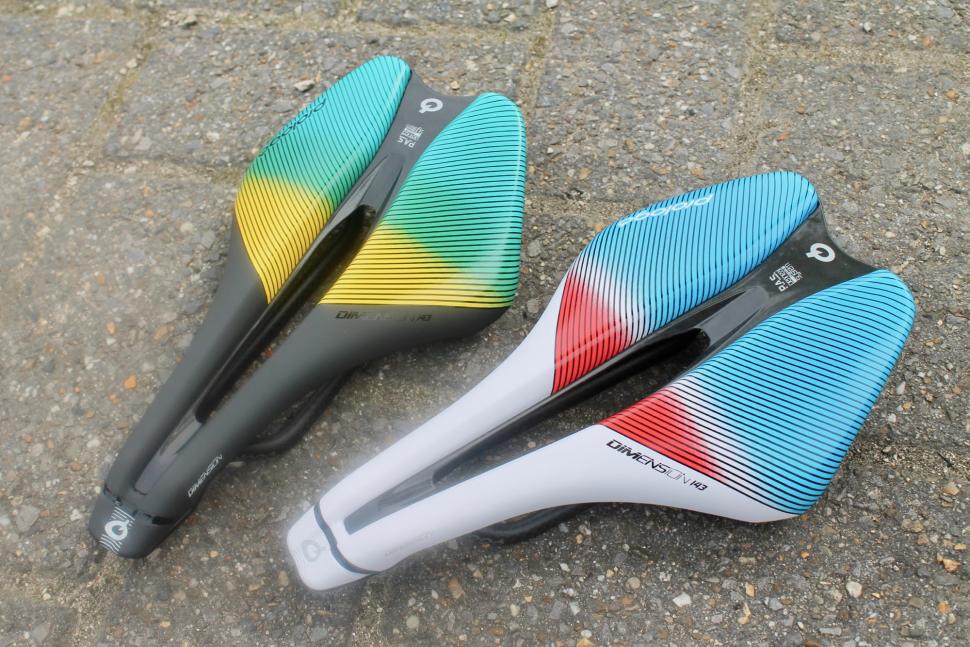

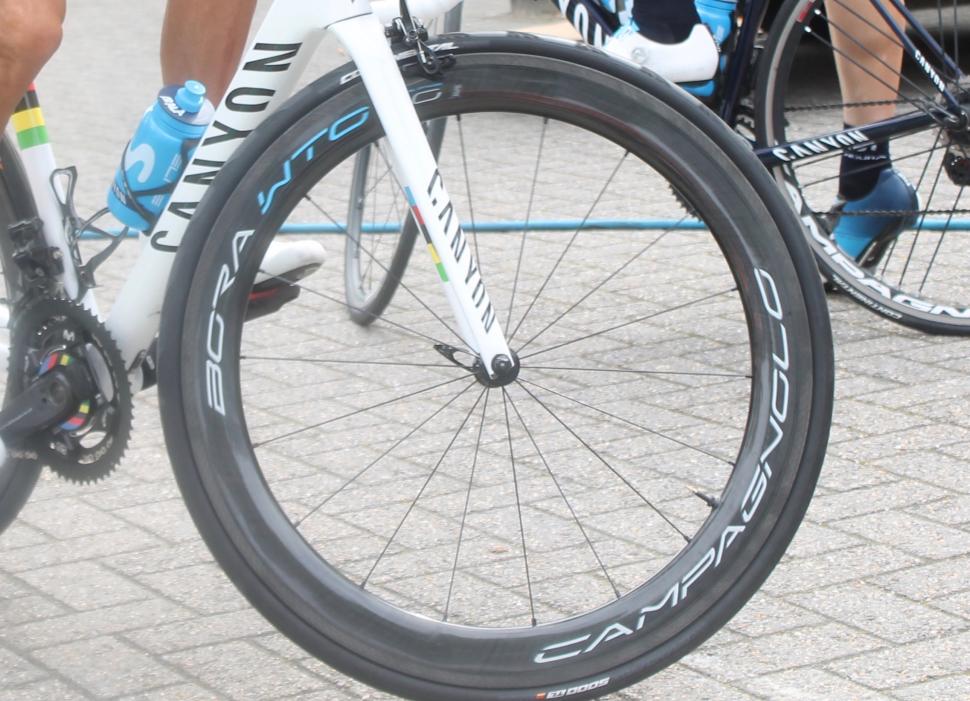
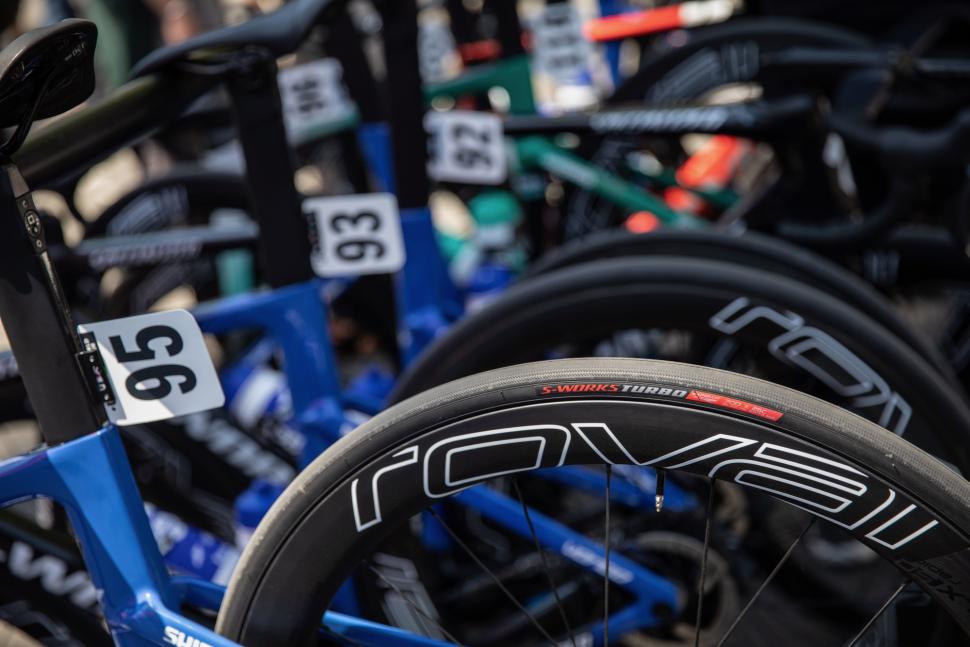
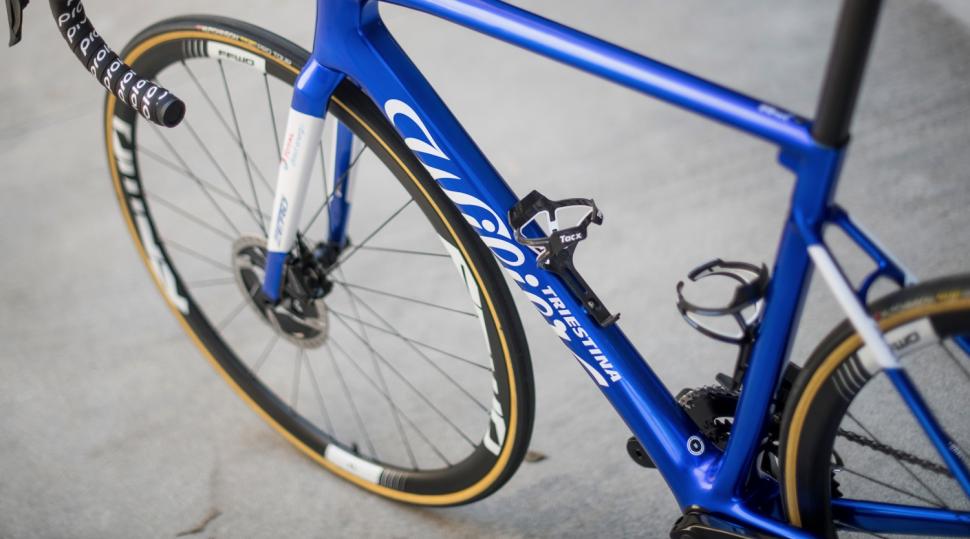

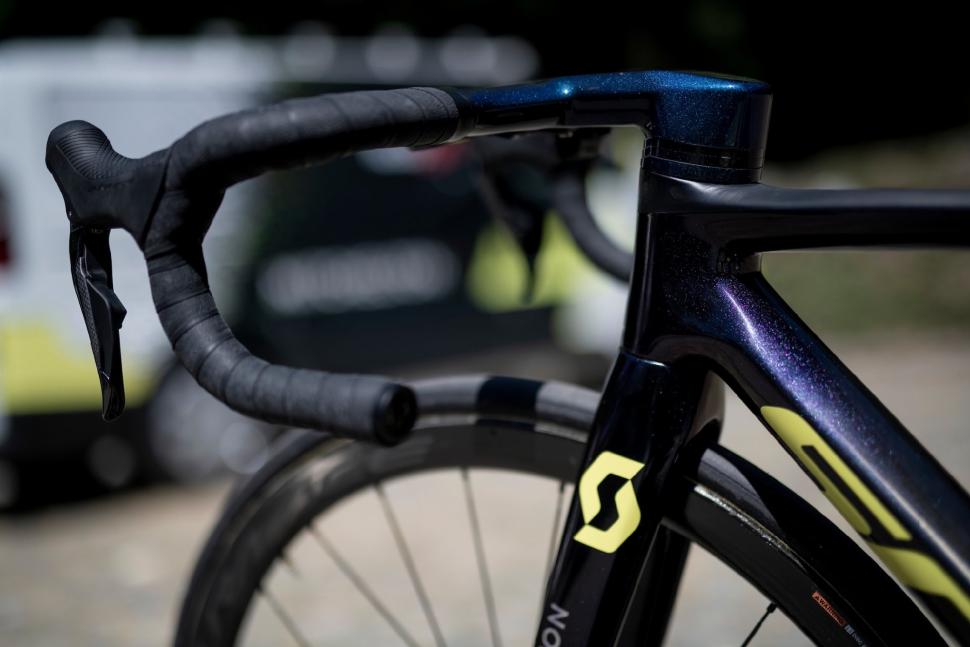
Add new comment
16 comments
I think that yesterday Alaphillipe would have stood a good chance of catching the G group on a well geared track bike or on steel rims with leather blocks (on the dry bit, at least), he just looks that good on the downhill and on the bicycle. And he was wearing yellow, near the end, with a chance, for France, that's got to be worth one hell of a marginal gain.
It's a shame we didn't see what he really could have done today.
And the coverage very rarely stays with a great descender doing their thing. They put the adverts on when they have gone over the top, and when the decent is longer the cameras find it difficult to keep up. Ah well.
I'm liking my new Hope Tech 3s, far better than badly set up cantilevers, and better than even well set up ones (with booster on the front) and I haven't used them in the wet yet. I also get a little more control with steering as one finger braking is very easy with very little pressure needed. Whether they are better than my ceramic 26 inch rims with xtr Vs and Nokon cables (Ti booster on the front, though I do have a shimano carbon one, but I just cannot bear to fit it, the Ti is so elegant) I have yet to decide. I had to wind the power down on the rear, just too easy to lock it up.
Now Maguras on ceramic rims, that would be something.
As I said, odd triple post.
odd, triple post.
I have done a big alpine descent with a disc brake bike and confidence and predictability is exactly what disc brakes deliver.
Why is this even still a discussion? Best case scenario for those who don't like disc brakes (and for the most part have never even tried them) is that they offer no disadvantage to professional riders.
It's a weird obsession bordering on the some sort of psychosis.
Don't confuse comments saying that JA would have caught the group in front whether he had rim or disc brakes with an assessment of how good they are. More just the particular circumstances we saw yesterday.
Anyway rode my rim brake bike yesterday and I am taking my disc brake road bike away with me on holiday tomorrow.
PS There are others who are obsessed though.
Because this is road.cc where there are only 3 topics for discussion: discs, helmets, camera footage.
Alaphillipe is just over 60kg soaking wet. He's on discs because Specialized give them a bonus for doing so.
Mmmm... I don't buy it, professional cyclists with the best available kit, set up by professional mechanics, in the dry? I doubt there's much of a performance difference between rim brakes and discs in those conditions.
In the wet maybe, but I doubt anyone would be taking chances with late braking and overtaking on corners in those conditions.
Actually I would argue there is actually a decent advantage to be had by running discs on long alpine descents - the amount of force required through the lever and the ease of being able to modulate the breaking power. The reductions in force reduce stress through the arms and allow greater concentration on the actual acts of selecting the right line and taking the corners.
JA was pushing, the rest of the Thomas group wasn't, thought that was patently obvious, G was literally pootling down. I think most half decent amateurs who are good at descending would have been able to get past at the corners where the riders where being quite conservative. If his discs made that much of a difference it didn't show as he didn't gap the rest did he, it's not like he didn't have plenty of time/distance to do so.
I agree, Pinot was on the front while JA was catching them. A rider with many fine qualities, but nobody suggests he is among the best descenders. A motivated skilled JA was the factor, not the kit.
I wonder if the superior braking of discs accounted in any way for Alaphillipe's incredible descending yesterday? Yes, he's a great descender but that was phenomenal the way he caught and passed his rivals.
I thought the same. The actual grip of the tyre's contact patch is obviously identical, but the total confidence he showed especially when slotting overtaking moves through the GC group once he had caught them has to be influenced by total trust in the predictability of the disc brakes.
The fact that there is a mixture of disc and rim-brake bikes, says to me that disc brakes aren't a significant advantage for skilled riders. In the modern era of marginal gains, and adding weights to meet the UCI limits, if they saved even ten seconds they would have taken over the entire peloton by now. They probably will eventually, because manufacturers want to show off their latest bikes, fitted out with the latest gizmos.
If JuJu can hold on this would be the first Grand Tour won on disc brakes.